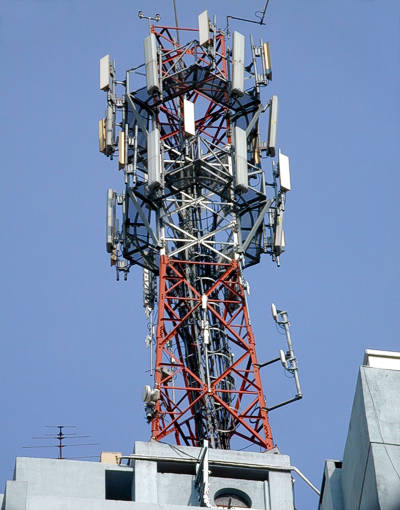The widespread use of mobile phones took place during the 90's of XX century. Since then it has not stopped the controversy over the alleged effects of this technology on human health and the environment.
To an outside observer of the complex issues it contains, may give the impression that the "scientific world" is quite polarized between two opposing positions. Of those who say the levels recommended by the ICNIRP (International Commission on Non-Ionizing Radiation Protection) are sufficient to protect human health and the environment and those who argue that it is necessary to drastically reduce these levels, as Current recommendations are not taking into account the thermal effects on living organisms, or the cumulative effects caused by a continuous low-level radiation.
In recent years there have been some important advances in science that have tipped the balance toward the side of scientists calling for caution and a reduction of exposure levels to which they are exposed living things. We discuss some of these advances in this brief review.
In December 2004 met the final results of Project "REFLEX" (acronym of "Risk Evaluation of Potential Environmental Hazards from Low Energy Electromagnetic Field (EMF) Exposure Using Sensitive in vitro Methods") in which 12 research teams from 7 countries of the European Union, including Spain. The research work was carried out in vitro with human and animal cells and has served to confirm that radiation from mobile phones are able to break the DNA, although still unknown biological mechanisms involved (http : / / www.jrc.cec.eu.int/emf-net/emfprojects.cfm?prjtype=2 )
The full study can be downloaded at
( http: / / www.verum-foundation.de/cgi-bin/content.cgi?id=euprojekte01 )
After these results we can say that radiation from cell phones to power density levels present genotoxic effects. Traditionally been considered impossible for non-ionizing radiation at low power densities produce these effects. But these results are not new, the team of Henry Lai Bioelectromagnetics Research Laboratory (Department of Bioengineering, University of Washington), published the same thing 10 years ago, when the deployment of mobile telephony was in its infancy ( Lai and Singh, 1995). ( http://www.washington.edu/alumni/columns/march05/wakeupcall01.html )
This finding does not necessarily damage the health of humans or animals exposed because the body's cells are efficient cellular repair systems. Unfortunately some studies published in recent years suggest that the defensive systems and cellular repair mechanisms may be affected by these radiations ( Hallberg and Johansson, 2004 ).
The epidemiological studies of mobile phone users show that its use can cause long-term effects such as eye problems (Dovrat et al., 2005) hearing (García Callejo et al., 2005), the blood-brain barrier (Salford et al., 2003) or reproduction (Davoudi et al., 2002) .
One consequence of these results is that they have made obsolete the European Recommendation (1999/519/EC) assumed by English law, which adopted the levels recommended by the ICNIRP and served as a basis for setting maximum exposure levels people.
Moreover epidemiological studies in the vicinity of phone masts reveal health problems (so-called microwave syndrome) among residents of the facility (Hutter et al., 2002; Santini et al., 2003, Navarro et al., 2003; Oberfeld et al., 2004). In the few epidemiological studies conducted so far cancer cases can get to quadruple in the vicinity of the antennas (Eger et al., 2004, Wolf and Wolf, 2004). Have proposed some plausible models of tumor promotion of these radiations have found a strong echo among the specialists (Leszczynski et al., 2002). Mobile phone radiation would be absorbed by brain tissue and stress activated protein (Hsp 27), leading to increased permeability of the blood brain barrier and changing the pattern of apoptosis (programmed cell death) that would prevent the destruction of old or transformed cells (which have suffered breaks in their DNA).
Prior to the introduction of third generation (UMTS), the Dutch government commissioned a study that found cognitive and health by emissions from mobile phone masts UMTS (Zwamborn et al., 2003) . The full study can be downloaded at
http://www.tno.nl/tno/actueel/tno_nieuws/2004/onderzoek_tno_naar_effect/tno_fel_report_03148_def.pdf
Effects on birds

has made a limited number of investigations on the effects of electromagnetic fields in birds. For exposure to low frequency magnetic fields (transformers and power lines) to the conclusion that affect birds and many of the adverse effects were found, although not always consistent. have observed abnormal behavior, physiology, endocrine and immune system, and effects on reproductive success, growth and development. Review of Fernie and Reynolds (2005) can be downloaded at ( http://www.ierp.bham.ac.uk/publications/Fernie% 20and% 20Reynolds% 202005.pdf)
The range of the electromagnetic fields produced by power lines or electrical appliances has nothing to do with the radiation from phone masts (the distance is coming in the first case centimeters and kilometers in the second). For the purposes of radio frequencies in birds has released a patch in Ardeola (Balme, 2004 a). ( http://www.ardeola.org/article?id=1211 )
A recent study (Balme, 2005), which has motivated the preparation of this brief note, adds more fuel to the fire of the possible effects of mobile phones would have on wildlife. It followed up a population of storks in Valladolid, in the vicinity of mobile phone masts in order to investigate their effects. The total productivity of 30 nests located within 200 meters of the antennas was 0.86 ± 0.16. In other 30 nests over 300 meters away from the antennas productivity almost doubled, with an average of 1.6 ± 0.14. Twelve nests (40%) located within 200 meters of the antennas did not have chickens, while only one nest (3.3%) of those located more than 300 meters had zero chickens. electric field intensity was higher in nests located within 200 meters of the antennas (2.36 ± 0.82 V / m) than in nests more than 300 meters away from them (0.53 ± 0 , 82 V / m). Some storks who tried to raise less than 100 meters from one or more phone masts in the main beam direction of emission, not to build their nest. These results are consistent with the possibility that pulsed microwaves are interfering with reproduction of white storks and corroborated the results of laboratory research by other authors.
long-term effects have also been found on trees (Balme, 2004 b). This article can be downloaded at:
( http://www.revistaecosistemas.net/articulo.asp?Id=29&Id_Categoria=1&tipo=otros_contenidos )
Final Comment
seems important to mention that in the economic field the large insurance companies have refused to cover possible damage to the health of phone masts, mobile phones and increasingly bring more warnings like to stay away from ear when establishing communication (since this is the time in which emits more radiation.)
has been suggested that industry could be endangering the health of humans (Leal et al., 2005) and causing an environmental contamination that unfortunately is invisible, and can have unpredictable effects on living .
Throughout the twentieth century there have been several episodes of "hijacking of science" by big business multinationals, which successfully delayed decision making, as in the case of asbestos, snuff and the most current GM (see review in: Corporate Corruption of Science . Ed: David S. Egilman, and Susanna R. Bohme, 2005. INTERNATIONAL JOURNAL OF OCCUPATIONAL AND ENVIRONMENTAL HEALTH, 11 (4) Special Issue., which can be downloaded in full at: http://www.ijoeh.com/ ) .
same may be happening with mobile phones, as suggested by some journals ( http://www.microwavenews.com/ ).
In what is no doubt that further research is needed and that studies in animals exposed to radiation can be very illuminating and essential to know the extent of the problem we face.

